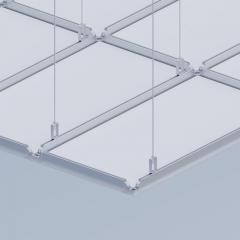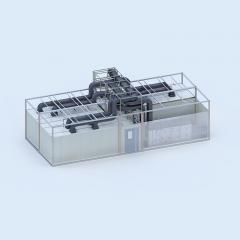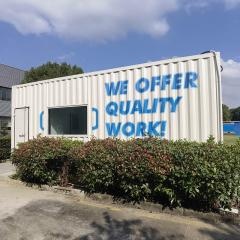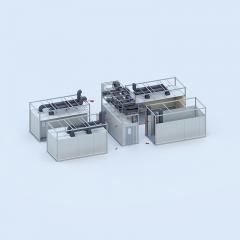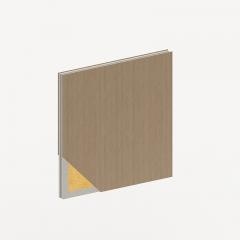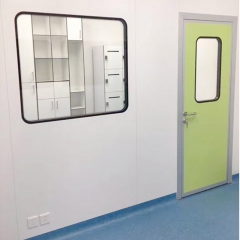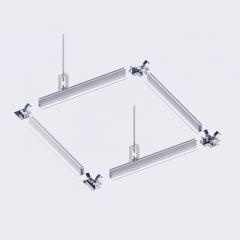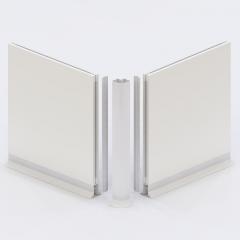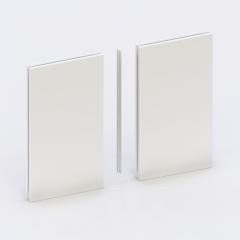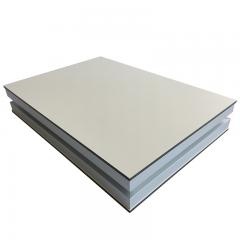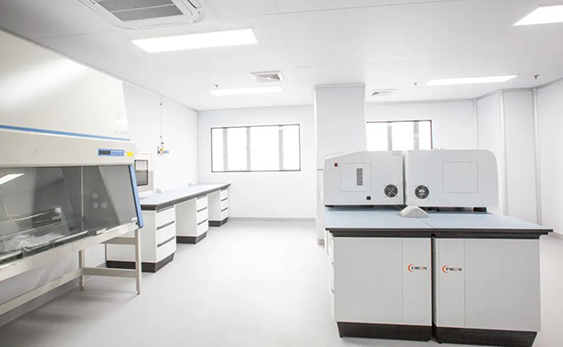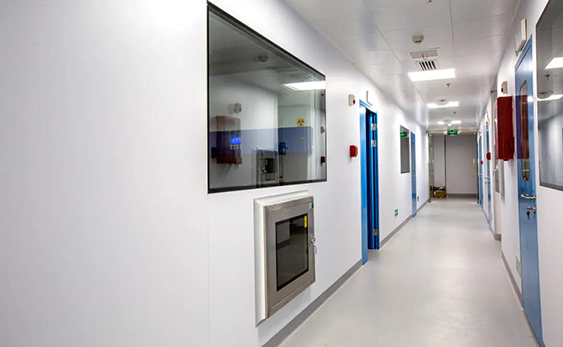Laboratory furniture is a special kind of furniture, because it is often in contact with water, electricity, gas, chemical substances and materials, and instruments and equipment during use. The characteristics of the times are more important to meet the requirements of laboratory scientific research on the functionality, robustness, corrosion resistance, and flexibility of installation and layout of the experimental environment. Therefore, laboratory furniture has higher requirements in terms of structure and materials.
I. Material requirements
(1) Countertop
As the core component of laboratory furniture, the countertop is one of the most important parts of laboratory furniture. The countertop is particularly important for the laboratory bench of the chemical laboratory. Due to the different use environment, the countertop of the laboratory furniture should meet the special requirements of different laboratories. For example, the experimental benches of chemical laboratories need to be resistant to acid and alkali corrosion, the experimental benches of biological laboratories need to be antibacterial, and the experimental benches of physical laboratories need to be antistatic. Some experimental benches need to have these characteristics, so, Different experimental benchtops should be selected according to different needs.
Nowadays, the commonly used test benches mainly include solid physical and chemical boards, epoxy resin boards, ceramic boards, and stainless steel boards.
1. Solid core physical and chemical board
The high-quality multi-layer kraft paper is immersed in special phenolic resin and then thermoset at high temperature and high pressure. The surface paper is treated with special corrosion resistance, which has the characteristics of acid and alkali corrosion resistance, impact resistance, and heat resistance, which is economical and durable. The commonly used thickness of this kind of plate is 12.7mm, 14.6mm, 19mm. Commonly used specifications are 1.2m×2.4m, 1.5m×3m or 1.5m×3.6m.
2. Epoxy resin board
It is mainly composed of reinforced epoxy resin, with smooth and safe arc-shaped edges, and is a chemical countertop that is integrally formed by a mold. The internal and external materials are the same, and it can be repaired and restored after damage. It has excellent acid and alkali corrosion resistance, impact resistance, and high temperature resistance (about 800°C). It can meet the requirements of laboratory corrosive chemical reagents, water tanks and other long-term water contact parts, so it is widely used. The thickness is generally 15mm or more. Commonly used are 1.5m×3m, 1.5m×3.6m and other specifications.
3. Ceramic plate
It is made of clay and fired at high temperature, and the surface is glazed. It is basically impossible to perform secondary processing, and is generally used for ventilated countertops. The performance of the ceramic plate is very superior, the best acid and alkali corrosion resistance, high temperature resistance, scratch resistance; but due to the particularity of the processing method, the size is generally relatively small, basically unable to carry out post-processing, and installation and adjustment are more difficult.
4. Stainless steel plate
304 or 316 stainless steel plates are mainly used, and the thickness is usually greater than 1.2mm. It is often used in a clean room or a laboratory bench for radioactive operations. It is easy to clean and not resistant to acid and alkali corrosion.
(2) Cabinet
The cabinet of laboratory furniture is usually made of wood or steel, and the structure is divided into floor type, steel frame support and suspension type, etc.
Wooden cabinets generally use melamine veneer panels or medium-density fiberboard veneers, which are connected together by three-in-one connectors. The doors and drawers of some laboratory cabinets are also veneered with decorative refractory panels. The hardware of the wooden cabinet (mainly refers to the slide rail and hinge) should be selected with quality assurance products.
The main cabinet of the steel cabinet is generally made of 1.0 mm thick cold-rolled steel plate, which is treated with epoxy resin powder electrostatic spraying, and has certain acid and alkali corrosion resistance. Door panels and drawers are usually made of 0.8 mm or 1.0 mm thick cold-rolled steel plate, which is treated with epoxy resin powder electrostatic spraying. The slide rail can choose the bottom silent slide rail or the three-section load-bearing slide rail. The hinge can choose the steel hinge commonly used in wooden cabinets or the stainless steel hinge (stainless steel hinge, load-bearing effect is good, and the opening angle is large ).
Regardless of whether it is a wooden cabinet or a steel cabinet, under normal circumstances, there will be a movable layer in the cabinet door, which is convenient for users to comprehensively arrange and use.
The handles of the cabinet are generally divided into two types: handles and clasps. The materials are stainless steel, aluminum, and plastic. There are many forms of handles, but they all protrude from the drawer or door panel. The clasp also has a variety of shapes, which can be selected according to the user's usage habits.
1. Basic cabinet requirements
Depending on the relationship between the drawer, the door, and the cabinet, the cabinet door and drawer can be built-in or outer-covered. According to the layout of the cabinet doors and drawers, the cabinet can be selected as single door, double door, upper drawer and lower door, full drawer, single drawer or empty position, keyboard position, host position, etc. Need to carry out detailed design and arrangement according to the different needs of different experimental operations.
2. Cabinet structure requirements
General test benches are divided into two types: all-steel and all-wood floor-standing test benches and steel-wood all-steel suspended test benches. According to these two structural forms, the cabinets of the test benches are also divided into two types: floor-standing and suspended. The difference is that the floor-standing test bench has a toe plate and the hanging cabinet does not. The floor-standing test bench mainly relies on wooden or steel cabinets to bear the weight. Because the area that touches the ground is relatively large, the load-bearing performance is better. The suspended test bench is mainly supported by the supporting steel frame. The steel frame can be C-shaped or O-shaped steel frame. Generally, the steel pipe of the steel frame is made of square steel pipe with a cross section of 40mm×60mm and a wall thickness of 2.8 mm or more. It is better, the cabinet is easy to clean, and the suspended test bench has good flexible combination performance, which can be disassembled and assembled according to the changes in the laboratory, saving costs.
3. Accessories requirements
Because laboratory furniture is used in the special environment of the laboratory, it usually requires the use of water, electricity, gas, etc., and related accessories need to be configured on the laboratory bench. The water, gas and other accessories used in the laboratory are generally different from the civil water and gas accessories. It is necessary to choose special laboratory products produced by professional manufacturers.
(1) Sink: used to clean the utensils used in the experiment. The sink is made of high-density polypropylene (PP) by injection molding, with a thickness of 5mm, resistant to acid and alkali corrosion and organic solvent corrosion. Glassware is not easy to break when dropped into it, and it is not easy to splash water when it is deep (300mm). The bottom is equipped with a special drain head made of high-density polypropylene (PP).
(2) Faucets: All faucets use laboratory-specific vertical laboratory faucets, and their on-off valves are generally precision ceramic cores. The surface is treated with acid and alkali resistant spraying, and the PVC outlet can be removed and cleaned, or it can be replaced with a two-stage universal wave generator. The top of the single-port and three-port laboratory test faucet can be rotated 360 degrees.
(3) Drip rack: used to dry cleaned glassware. The materials generally include stainless steel and high-density polypropylene (PP) plastic plates, and the drip stick is made of high-density polypropylene (PP). It is best to freely adjust the drip bar up, down, left and right, so that more utensils can be inserted in the effective area. The dripping stick has two sizes and lengths to facilitate the use of different sizes of utensils.
(4) Gas supply Cock: Provide gas to the desktop for experiments. The gas supply cork adopts the laboratory-specific wall or vertical gas supply cork. The copper surface is sprayed with acid and alkali resistant paint to prevent acid and alkali and rust. The switch adopts a safety snap valve to enhance the safety of use. Avoid accidentally touching the switch, causing danger. The handle is a colored polystyrene product resistant to corrosion by chemical reagents.
(5) Power socket: adopt a 220V/10 A or 16 A multi-function power socket that has been certified by the state.
(6) Desktop eyewash: It is used for emergency flushing when chemicals are accidentally splashed into human eyes. Copper body, surface epoxy resin powder spraying treatment, acid and alkali corrosion resistance, high temperature resistance, anti-ultraviolet radiation, PP material dustproof cover, automatically flushed by water pressure when in use; water flow lock switch with control water valve and check valve , So that the water flow is turned on and the water flow is locked at one time; the spray water is sprayed in a mist-like diffusion and has a moderate intensity, which can quickly and thoroughly clean the eyeballs.
(7) Emergency shower: used for emergency shower when chemicals are accidentally spilled on people or clothing catches fire. The emergency shower is generally made of stainless steel. The shower body is a connecting rod pull switch. The eyewash device is a manual push plate switch with a foot switch. The shower body is designed with multiple water outlets to make the water appear umbrella-shaped and misty. It is easy to cover the whole body when showering. The eyewash unit adopts a double-outlet shower head design, a PP material dust-proof cover, which is automatically flushed by water pressure when in use; the water flow lock switch has a control valve and a check valve, so that the water flow is opened and the water flow is locked at one time; the spray water is misty Diffusion type and moderate strength, quickly and thoroughly cleans the eyeballs.
Second, function column
1. The role of the function column
The design of the functional column of the experimental bench is usually considered together with the reagent rack. The main function of the functional column is to provide a unified arrangement of water, electricity, gas, exhaust and other accessories that the experimental bench needs to use, so that the experimental bench is clean and beautiful. Various water and electricity accessories are convenient and quick.
Because most of the water and electricity pipelines of foreign laboratories are arranged on the top of the laboratory, the functional columns of most foreign laboratory benches are arranged from the roof of the room to the bench surface, while most domestic buildings are hydropowered. They are all arranged on the ground or on the top surface of the next floor. Therefore, the functional columns of the experimental bench are usually combined with the reagent rack and pass from the inside of the experimental bench to the top of the bench. The various components of the water and electricity required by the experimental bench Combined with the shelf or column of the reagent rack to meet the requirements of use.
2. The design of the functional column
The common design is that the side of the steel pillar is attached to the power socket plate, and the lower part of the reagent rack has a function plate to install water supply, air supply or exhaust accessories, or the PP cup tank and vertical water supply and air supply cork in the middle of the countertop. . The reagent rack, as a common component of the laboratory bench, is often required by laboratory operators. The shelf can be hung on the steel shelf support at different positions of the vertical row holes punched out by the steel pillars to adjust different heights to meet different requirements. For the placement requirements of high-level reagent bottles, the laminate can be a wooden laminate, a steel laminate or a tempered glass laminate.
Welcome to inquiry experiment table、Fume hoods and reagent storage cabinets etc.
